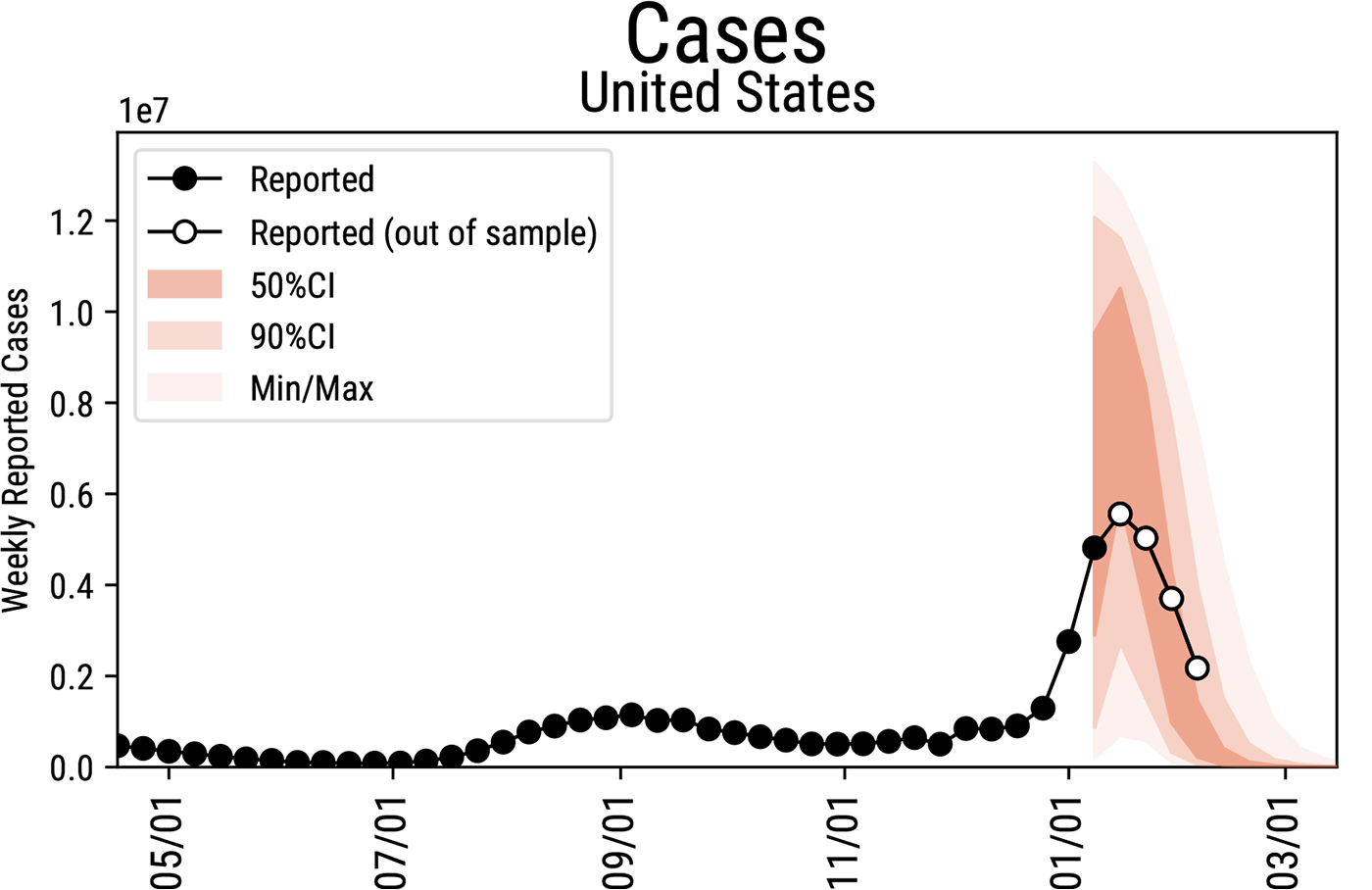The crest of the omicron wave is in the rearview mirror in the United States. Daily new COVID-19 cases have fallen to half those of the peak of the surge in mid-January. Hospitalizations—a metric that lags behind new case counts—also are declining significantly across the country.
“What we have for the next few weeks should be a decrease in activity. All of the indicators seem to go down,” says Alessandro Vespignani, director of the Network Science Institute and Sternberg Family Distinguished Professor at Northeastern. Vespignani leads a team of infectious-disease modelers that has been developing a set of projections about the possible futures of the COVID-19 pandemic since the crisis began.
If there are no surprises, Vespignani’s team projects that COVID-19 case rates should return to pre-omicron levels in March. And by late spring or early summer, he says, the U.S. and other countries in the Northern Hemisphere may be able to breathe a little easier.
“We might have a considerable break from COVID-19” during the warmer months, Vespignani says. “We will spend more time outside, and the virus doesn’t like the sun and the warmer temperatures.”
But that is not a certain future, and trouble could still arise before then, he says. As the emergence of the omicron variant showed, highly transmissible mutations in SARS-CoV-2, the coronavirus that causes COVID-19, can change the trajectory of the pandemic quickly.
“Likely there will be other bumps in the road,” Vespignani says. But “what we think is plausible is that those bumps will be less threatening.”
Read more on News@Northeastern.
Photo courtesy of the Network Science Institute/Northeastern University.

